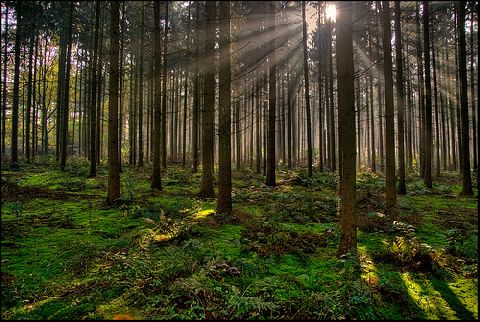Planting Trees For Posterity
On the road…again!
Afghanistan to Zambia
Chronicles of a Footloose Forester
By Dick Pellek
On Tree Planting
Foresters and laymen alike agree that planting trees is a desirable thing to do. Homeowners most often plant fruit trees or flowering ornamentals on their properties to enjoy the fruit and/or the foliage--for decades. The beauty and the satisfaction increase with the size of the trees and the passage of time. Planting trees for a living, however, takes on a different meaning and a greater scope of planning and logistics. The Footloose Forester planted his share on the job, and then planted a few dozen ceremonial trees in different places around the world. It was the latter thought that prompted him to capture a few of the memories for safekeeping.
Starting with planting trees on the job: by his personal count, the Footloose Forester planted about 330,000 seedlings. The vast majority of them were part of re-forestation plantings after forest fires in California. The company he worked for, Cal-Pacific Forest Consultants, had contract tree planting as one of its bread-and-butter specialties. It was hard work--really much like stoop labor-- but there was always a lot of satisfaction in planting with the knowledge that someday the trees would mature and become useful. Cal-Pacific did most of its work up and down the Sierra Nevada mountain range, and also in the Coast Range where sometimes we planted redwoods. Some jobs were hundreds of miles apart; finish one job, then pack up and head for another job. We started just as soon as the snow cover was gone, to take advantage of high soil moisture.

The cherished part of tree planting, however; were those ceremonial plantings that usually accompanied the opening of a new building, a research facility, or a private dwelling. He remembers being asked; as a guest, as an official visitor, as a conference attendee, or as a fellow-forester; to mark a special occasion by planting a tree.
He remembers planting a rosewood tree, (Dalbergia sisso) on the grounds of the West Pakistan Forest School in Bahawalpur where he taught forest surveying as a Peace Corps Volunteer. He helped christen a new wing of a research facility near Kisumu in Western Kenya, by planting a tree there. Hopefully, the Kiglea africana, (the African sausage tree) that he planted near the airport in Nairobi is still there and thriving. There were dozens of ceremonial trees planted that day, when he and other United Nations Conference attendees joined with the Kenyan Forestry Department in marking the occasion.
A few years earlier he did not miss the opportunity to plant a sapling outside the new Ministry of Agriculture office at Sao Filipe in Cape Verde, and he can never forget laying out a statistical design and planting dozens of experimental species further up the valley on São Tiago, near the town of Colheta. During a short conference in Togo, the organizers were proud to show us their extensive plantation network and asked us to make the gesture of planting something ourselves. The Footloose Forester was proud to plant 30-50 seedlings. Finally, getting his company, Pacific Architects & Engineers, to participate directly in the dust and erosion control planting of 250,000 Casuarina equisetifolia seedlings in sandy soil at Cam Ranh Bay in Viet Nam was a tough sell, but the job was eventually approved as a dust and erosion control project. It was a big success and Cam Ranh was better for it.
There were two other events that he is proud of, as a tree planter. A friend in Florida moved into a new home in Gainesville and expressed a desire to have a couple of dogwoods on his property. Footloose Forester volunteered to go into the woods and get wild dogwoods and transplant them for his friend. He came back with 20 saplings and transplanted them around the outside border of the house lot. All of them lived, except two. On another occasion in Indonesia, he recalls that one small island on which there was a wildlife guard station had more than a dozen coconut trees and two or three tamarind trees. He mentioned to his colleagues that the larger island that housed the research station and had the most visitors had only a single coconut tree and no tamarinds. The Footloose Forester was keen to transplant a tamarind (Tamarindis indicus) because it produced an abundance of seed pods that were rich in Vitamin C and; at that time, there were no other trees on that other island (Pulau Peucang) that had edible fruit. So he dug up, with their permission, a tamarind tree and transported it by boat to the other island more than 10 miles away. He planted it and watered it until the day he left the island.
He anticipates watching the few trees he proudly planted on his sister Mary’s property in Dandridge, Tennessee, as they grow into maturity. Finally, just as soon as he decided to finalize this short memoir, he remembered the two Colorado blue spruce trees that stand outside the Pellek residence in Coraopolis, PA. They were purchased as live Christmas trees a year or two after we moved in. In early January 1981 we transplanted them into frozen ground. Today, the oldest is about 30 feet tall.




